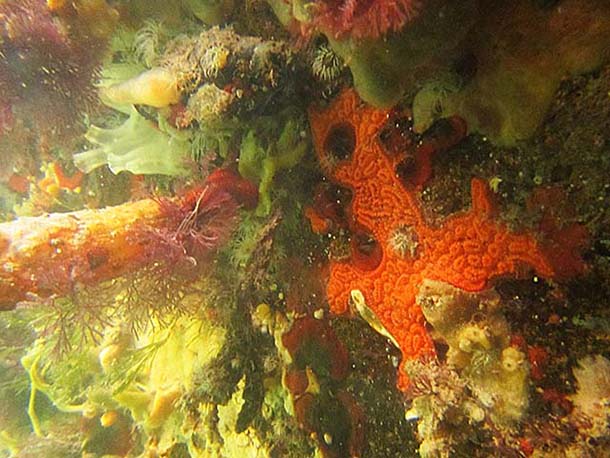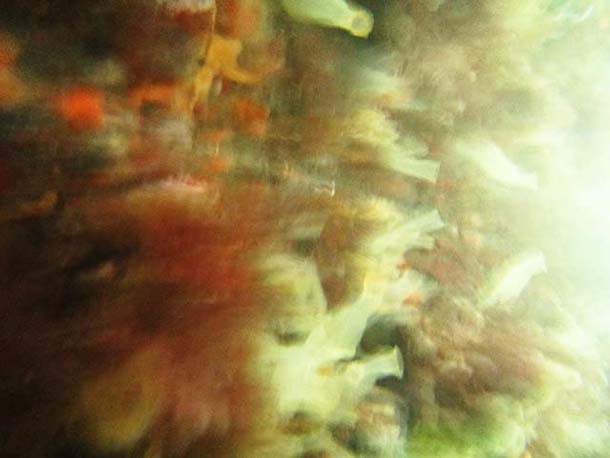Essay for October 2013 Sausalito Reefs
While working on The Dock collecting photos for the book I often wished I could just jump in the water, see what was happening, and take pictures of interesting scenes. Scuba gear is expensive, a pain to get in and out of, and water proof containers for cameras are also costly and cumbersome. Then I discovered relatively inexpensive "point and shoot" cameras that work under water. On the right are my first efforts to document The Dock in situ, using the Canon Power Shoot D20. The images are as beautiful to me as photos I have seen of coral reefs, thus the title of the essay.
The nature of floating docks
Floating docks are usually constructed using hollow concrete boxes, hollow black polyethylene boxes, or Styrofoam blocks. Concrete docks are the most appealing for biologists. They are heavy and thus float deeper in the water, providing a larger vertical surface for organisms to grow on. A concrete surface is a complex mixture of calcium and silicon oxides, and calcium carbonate. It's much more similar to a coral surface (calcium carbonate) than are the plastics. You can still find interesting growth on plastic docks, but you may have to reach under the floats to find the really interesting stuff. The dock these organisms are growing on are concrete.
Environmental variables
Sun intensity: correlates with direction, thus surfaces facing South get the most sunlight, facing North the least. However, in many docks some segments are shaded by structures, such as the pier supporting the docks.
Temperature: dock fingers on the outside of the entire dock complex, near the channel, will usually be colder. These surfaces will also be exposed to predators that stay in the deeper, more exposed water.
Animals often clump together
In several places in LOTD I have described the planktonic juvenile of animals with sessile adult forms, e.g. tunicates, mollusks, etc., and stated that this was the mechanism that enables the species to spread and populate large areas rapidly. But most of these animals rely on broadcast spawning, i.e. eggs and sperm are injected into the water where fertilization occurs (the parents hope). Even one individual can reproduce this way, if its sperm can fertilize its own eggs, which is true for tunicates. However, tunicates typically release eggs and sperm at slightly different times, precisely to minimize self-fertilization.
Even for animals that do not use broadcast fertilization there is an advantage to form large groups before reproduction. They all need mates, and there is a better chance of finding one in a group, (also true of humans). On The Dock you can find clumps of Cionas, and clumps of anemones that are only 10 m apart, and are in areas on the floats that appear to be identical in terms of sun light etc.


